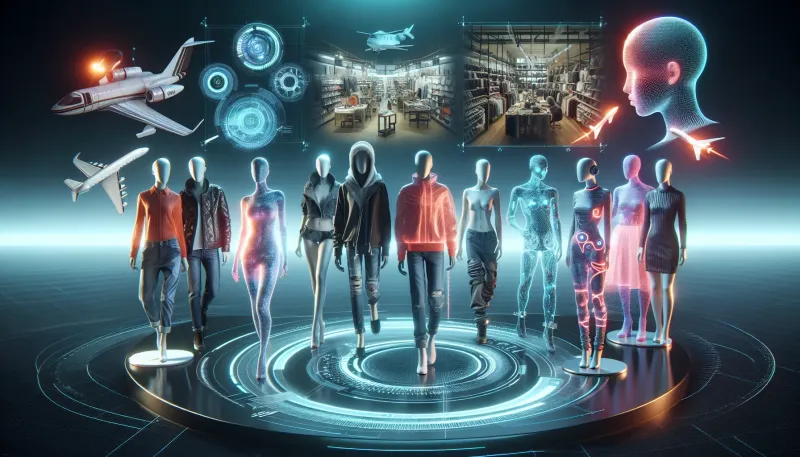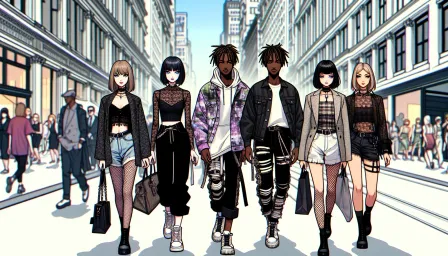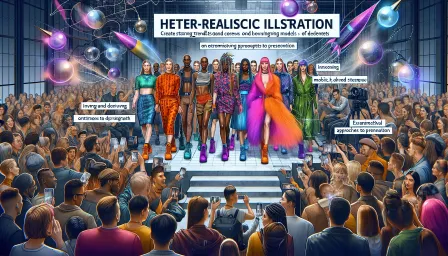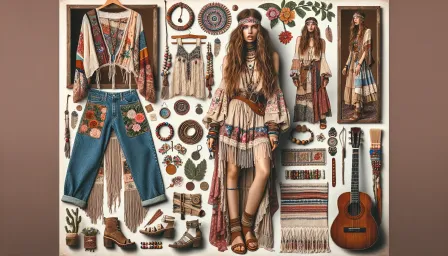How Fashion Industry Disruptions Are Changing the Game in 2024

Explore how the latest disruptions in the fashion industry in 2024 are transforming the way we think about clothes and sustainability.
The fashion industry is renowned for its ability to evolve and redefine itself with the changing times. In 2024, we are witnessing an era of significant fashion industry disruptions that are not only reshaping consumer preferences but also driving innovations toward sustainability, technology, and inclusivity. In this article, we delve into the most impactful disruptions transforming the fashion world today and their implications for the future.
Technological Innovations in Fashion
Technology stands at the forefront of fashion industry disruptions, introducing groundbreaking advancements that are reconfiguring retail and production processes. Here are some key technological innovations:
Virtual and Augmented Reality
Virtual and augmented reality (VR/AR) technologies are altering the way consumers shop. Virtual try-ons, powered by AR, allow customers to see how clothes will look and fit on them without needing a physical dressing room. This has significant implications for reducing return rates and enhancing the shopping experience. Retail giants like Zara and Amazon have already integrated AR features into their shopping platforms, setting new standards for the industry.
Artificial Intelligence and Data Analytics
Artificial Intelligence (AI) is pivotal in predicting trends, managing inventory, and personalizing customer experiences. AI-driven data analytics help fashion brands understand consumer behavior better, enabling tailored marketing strategies and improved inventory management. Companies like H&M and Adidas are leveraging AI to refine their operations and market strategies.
Sustainability and Ethical Fashion
As environmental consciousness grows, the fashion industry faces increasing pressure to adopt sustainable practices. Several factors are driving this shift towards ethical fashion:
Eco-Friendly Materials
The use of sustainable materials such as organic cotton, recycled polyester, and bio-fabricated leather is on the rise. These materials reduce environmental impact and meet the growing consumer demand for sustainable products. Brands like Patagonia and Stella McCartney have long championed eco-friendly materials, and their influence continues to inspire industry-wide changes.
Circular Fashion Economy
The concept of a circular fashion economy —where products are reused, recycled, and redesigned to minimize waste— is gaining traction. Platforms like The RealReal and Depop enable the resale of second-hand items, encouraging consumers to buy less new and more used, which prolongs the lifecycle of garments.
Inclusivity and Diversity
Fashion industry disruptions are also addressing the need for greater inclusivity and diversity in both product offerings and marketing campaigns:
Expanded Size Ranges
Brands are increasingly offering extended sizes to cater to a broader audience. This shift not only acknowledges the diverse body types of consumers but also breaks down long-standing beauty standards. Brands like Fenty and Universal Standard are leading the charge, offering comprehensive size ranges that ensure inclusivity.
Representation in Fashion
The call for greater representation across races, genders, and abilities is reshaping fashion marketing. Campaigns are now featuring a diverse mix of models to reflect the world more accurately. This movement towards inclusivity is backed by brands like Tommy Hilfiger with their adaptive clothing lines for people with disabilities.
Direct-to-Consumer (DTC) Models
The shift towards direct-to-consumer models is another significant disruption in the fashion industry:
Online-First Brands
DTC brands such as Glossier and Warby Parker skip traditional retail channels, opting instead to sell directly through their websites or exclusive stores. This model allows for complete control over the customer experience and creates a more personalized shopping journey.
Subscription Services
Subscription-based models, like those offered by Rent the Runway and Stitch Fix, provide consumers with a continual influx of fashion items. These services cater to the desire for newness and variety without the commitment to individual purchases, aligning with sustainability goals by encouraging rental over ownership.
Conclusion
The disruptions rocking the fashion industry in 2024 are reshaping the landscape in profound ways. From technological advancements to sustainability, inclusivity, and new business models, these changes are setting the stage for a more innovative and equitable future. As brands and consumers navigate this evolving terrain, the emphasis on ethical practices, personalized experiences, and diverse representation will undoubtedly continue to drive the industry forward.



























